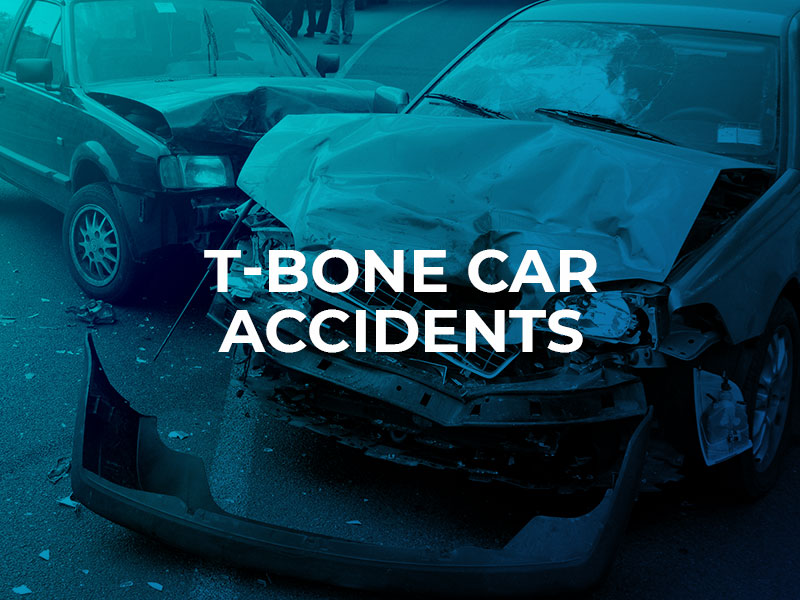T-Bone Car Accidents
Any car accident is scary and has the potential to cause injuries. However, T-bone accidents are amongst the deadliest collisions that occur on the roadway. A T-bone accident is one in which the front of one vehicle slams into the side of another, essentially forming a “T.” These accidents are also referred to as broadside car accidents.
While vehicles are manufactured safer now than in the past, T-bone crashes still have a high risk of injury to the occupants of the vehicle.

Why are T-bone accidents so dangerous?
T-bone accidents are more dangerous for the occupants of the vehicle struck on its side. This is because the sides of a vehicle are much more vulnerable to damage than the front or rear. A side impact often puts drivers and passengers in close proximity to the vehicle that struck them. Even with modern side-impact airbags, this is not always enough to prevent serious injuries, including:
- Broken or dislocated bones
- Severe lacerations or punctures
- Damage to soft tissue or internal organs
- Traumatic brain injuries
- Spinal cord injuries
- Neck injuries or whiplash
Each of these injuries requires immediate medical attention. In many cases, T-bone crash victims need surgery or significant recovery time. They may not be able to work while they recover and, in a worst-case scenario, may be permanently disabled.
How do T-bone accidents occur?
Most T-bone accidents occur around intersections, given the fact that this is where perpendicular flows of traffic occur. Some of the most common causes of these accidents include:
- Running a red light or stop sign. Running a red light or stop sign puts all motorists in perpendicular lanes of traffic at risk of collision.
- Speeding through an intersection. Speeding through an intersection to beat a yellow light or any other reason can lead to a striking a vehicle in the perpendicular lane of traffic.
- Malfunctioning traffic signals. When a traffic light is not working properly, this could lead to dangerous situations for all motorists.
- Left-turn crashes. Left turns could lead to serious T-bone crashes, particularly when a driver misjudges the distance and gap between oncoming traffic.
- Distracted drivers. Distracted driving is dangerous driving and could lead to drivers not stopping for a red light or stop sign.
- Vehicle defects. If a vehicle’s brakes or accelerator are not working properly, they could end up in a dangerous situation at an intersection.
Who is responsible for a T-bone accident?
Determining who is at-fault for a T-bone accident is not always easy. It will be important for your attorney to analyze all aspects of the crash in order to prove fault. This will include gathering all evidence related to the crash:
- Any photographic evidence or video surveillance. In many cases, there are cameras on nearby traffic lights or businesses that can be used to prove the other driver’s negligence.
- Eyewitness accounts of the incident will be valuable.
- Police reports will likely include the officer’s determination of who was at fault. They could also have information about skid marks, gouge marks, impact marks on guardrails and other surfaces, and more.
It may be necessary to secure an accident reconstruction expert to help with your case. It is vital that you secure compensation for all accident-related injuries and damages. An attorney can help you navigate the often complex waters of accidents, insurance companies, and other parties involved.